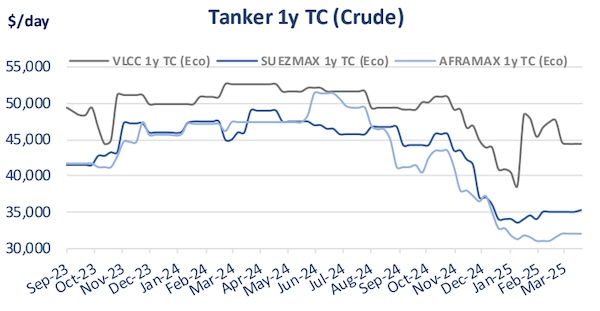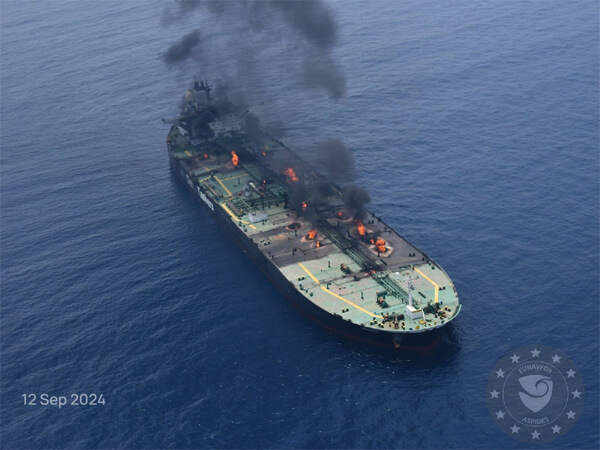Shipping Industry Faced With Increased Operational Costs and Route Disruptions

The shipping industry could be set for a turbulent period ahead, with higher opex being the main takeaway. In its latest weekly report, shipbroker Xclusiv said that “recent geopolitical developments involving the United States, Iran, Yemen, and China continue to create significant implications for the global shipping industry, influencing freight costs, risk premiums, and trade flows. Firstly, the renewed U.S. sanctions targeting Chinese refiners and vessels involved in Iranian oil transportation represent a tightening of existing restrictions, directly impacting crude oil shipping costs and operations. The sanctions specifically effecting entities like Shouguang Luqing Petrochemical highlight a clear escalation aimed at curbing Iranian oil exports, particularly to China. Given that Iranian crude constitutes over 10% of China’s oil imports, the sanctions could initially lead to reduced shipments, increased freight costs, and heightened operational complexity”.

Source: Xclusiv
According to the shipbroker, “traders already report freight rates for VLCCs from transshipment points near Malaysia to Chinese ports in Shandong have more than doubled to around $3-$4 per barrel. However, despite these elevated costs and disruptions, traders anticipate that Chinese refiners will adopt new business structures and payment methods, thus maintaining a steady, albeit potentially reduced, flow of Iranian oil. China’s diplomatic stance, opposing unilateral sanctions and affirming trade with Iran as legitimate, may further embolden Chinese entities to circumvent sanctions”.

Xclusiv said that “secondly, rising instability in the Red Sea region due to U.S. airstrikes on Yemen, aimed at deterring attacks by the Iran-aligned Houthis, has increased war risk premiums significantly. The Houthis’ threat to target vessels linked to the U.S. and Israel has already escalated shipping insurance costs. After a brief easing earlier this year, risk premiums surged again, with rates now reaching as high as 2% of a ships value for vessels willing to navigate these waters. The Houthis’ explicit threats and past attacks, including sinking vessels and killing seafarers, exacerbate uncertainty, prompting insurers and ship operators to reassess risks carefully. Consequently, this volatility directly translates into substantial additional operational costs, potentially redirecting routes or reducing traffic through critical maritime corridors like the Red Sea, affecting global supply chains”.
“Finally, Iran’s Supreme Leader Ayatollah Ali Khamenei’s recent statements distancing Iran from direct responsibility for actions by regional groups, including the Houthis, add another layer of complexity. Although the U.S. explicitly links Iran with Houthi aggression, Khamenei insists these groups operate based on independent motivations. Regardless of Tehran’s stated position, Washington’s approach ensures sustained tension and potential further military action in the region. The ongoing geopolitical friction reinforces existing security concerns among shipping companies, prompting them to factor in heightened risks into long-term strategic planning”, the shipbroker said.

Source: Xclusiv
“Together, these developments indicate a period of increased operational costs, elevated insurance premiums, and significant route disruptions within key maritime trading lanes. While traders and shipping companies have historically found mechanisms to adapt to sanctions and security threats, the combined pressures from escalating geopolitical tensions involving Iran, Yemen, and key international actors like the U.S. and China mean that the shipping industry must brace for sustained volatility, increased costs, and a persistent need for strategic flexibility in navigating complex international waters”, Xclusiv concluded.
Nikos Roussanoglou, Hellenic Shipping News Worldwide




